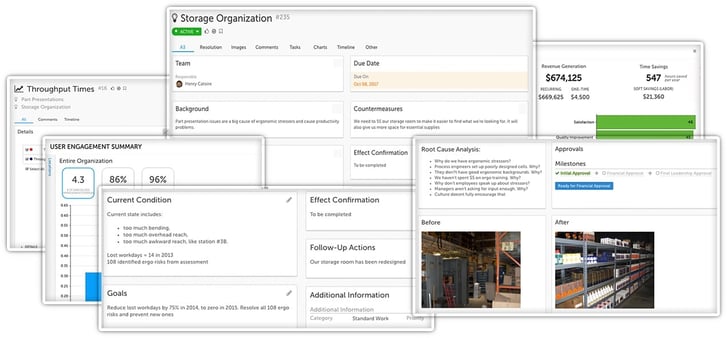In a recent post on A3 thinking, we outlined the A3 process itself—and concluded with some strategies team members can use to confront leadership resistance.
Today we’re going to explore other setbacks that may come up while conducting an A3. KaiNexus sat down with Jess Orr, continuous improvement practitioner and founder of Yokoten Learning, to discuss the best ways to deal with pressure and lack of buy-in from the team. You can view the full webinar here.
A Deep Dive into A3 Thinking
Presented by Jess Orr
We will cover topics including:
- A3 Thinking: A Quick Refresher
- When to Use an A3 vs. Other Tools
- How to Engage Others in the Process
- Change Management 101
- The Hardest Part: Sustaining the Gains
A3 is used in applications from Hoshin strategy to personal life. More than a tool, it’s a problem-solving mindset most relevant to medium-complexity problems—that is, problems without a known solution that can be solved in one to three months. Examples include decreasing a high rate of errors in billing invoices, reducing temporary employee turnover, and increasing the average SAT score for high school students.
Granted, these are issues organizations want to solve quickly—but quicker doesn’t necessarily mean better.
Coping with Pressure to Find a Quick Solution
If you are grappling with pressure to find a quick solution during the A3 process, ask your team the following: Do we want to be solving the same problem six months from now, or fix it for good?
Chances are you want to address the issue permanently. And while some team members might be eager to implement a quick fix, it’s crucial that they understand the difference between fast and slow thinking. The A3 process engages the rational brain, and focuses on achieving sustainable results.
To this end, rather than rushing through the A3, team members can implement short-term countermeasures to stop the bleeding, so to speak, and buy time for deeper investigation. For quality defect issues in particular, temporary countermeasures are critical.
Some team members, however, might not be eager to solve the problem at all.
Addressing Lack of Buy-in from the Team
Before starting the A3, facilitators should work to build a collaborative vision rooted in trust. This clarity helps to cement the purpose of the A3, shedding light not only on the problem but also on why all stakeholders should want to solve it.
If lack of buy-in persists, the facilitator should work to understand its source. Most resistance is based on fear, and as such, stakeholders can—using the A3 process as inspiration—conduct root-cause analysis to encourage team members to suspend their disbelief in the process.
- To address a lack of understanding, facilitators and team members can meet one-on-one to explain the purpose of the A3.
- To address a lack of bandwidth, facilitators can ask team members whether the problem will improve their daily work.
- To address a lack of confidence in the process, facilitators can request that team members suspend their disbelief until the results are proven.
And finally, another way to ensure team buy-in while conducting an A3 is to reassure all parties that countermeasures are experimental and that failure is not final. In the A3 process and in life, we have to give ourselves permission to fail.
For more details on this webinar with Jess Orr, be sure to watch the whole thing!
Or, if you'd rather, check out this recorded demo to learn about how A3 software increases collaboration, streamlines improvement, and amplifies impact. Watch it here.


![[WEBINAR] A Deep Dive into A3 Thinking](https://no-cache.hubspot.com/cta/default/326641/a78d9f1b-c108-4709-8a9d-9dd5a8a020b3.png)


Add a Comment